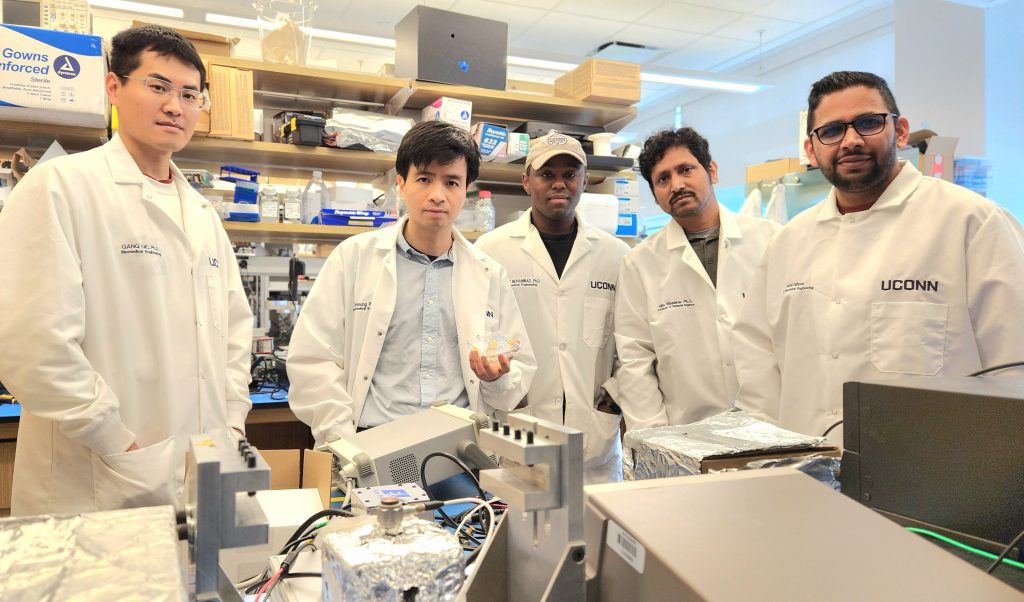Backed by a $2.3M grant from the NIH and NIH/NIBIB, Thanh Nguyen will stimulate cartilage regeneration in large animal model.

Millions of Americans suffer from osteoarthritis, a painful joint disease that wears down cartilage and can severely impact mobility. Pain medications only mask symptoms, and surgical option carry risks of infection and immune rejection.
At the University of Connecticut, a research team led by Thanh Nguyen, associate professor of mechanical engineering and biomedical engineering, believes the future of joint repair might lie in a tiny electrical spark—and a simple injection.
Backed by a $2.3M grant from the National Institutes of Health (NIH) and National Institute of Biomedical Imaging and Bioengineering (NIBIB), Nguyen and his team are developing an injectable hydrogel designed to stimulate cartilage regeneration in large animal models.
“With current treatments, we’re managing the pain, not healing the tissue,” says Nguyen. “We’re hoping that the body’s own mechanical movements—like walking—can generate tiny electrical signals that encourage cartilage to grow back.”
The innovation harnesses the body’s natural bioelectric signals to promote healing. The injectable gel contains a piezoelectric scaffold—a composite made from biodegradable poly-L-lactic acid (PLLA) nanofibers and magnesium oxide nanoparticles. When subjected to mechanical stress—such as joint movement or ultrasound—this scaffold generates small electrical charges.
Read more in the UConn Today article.